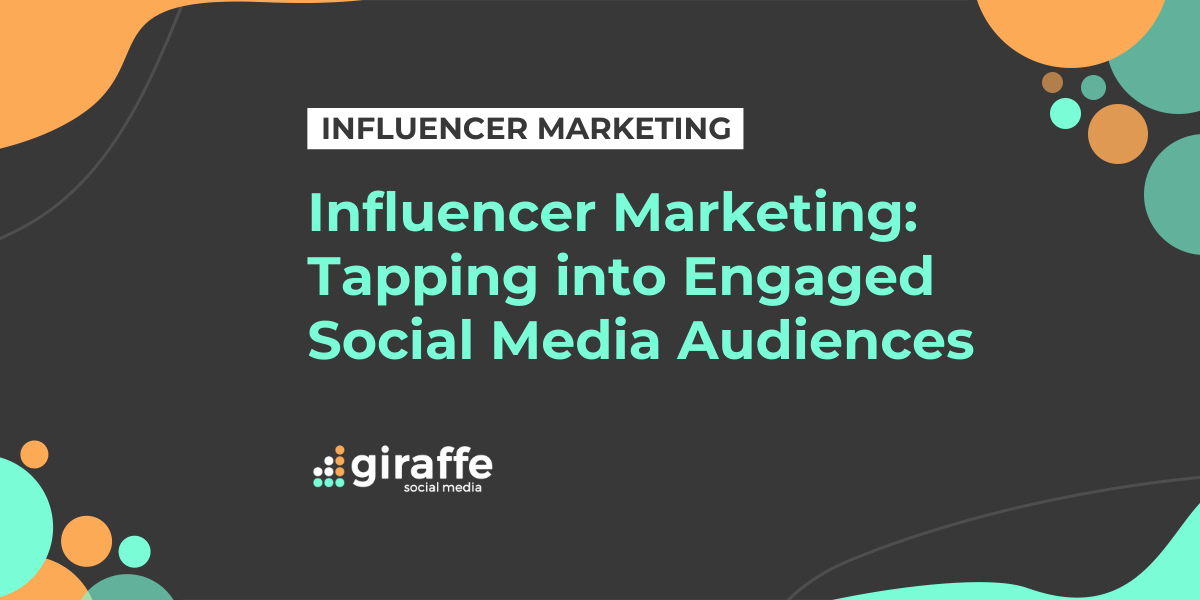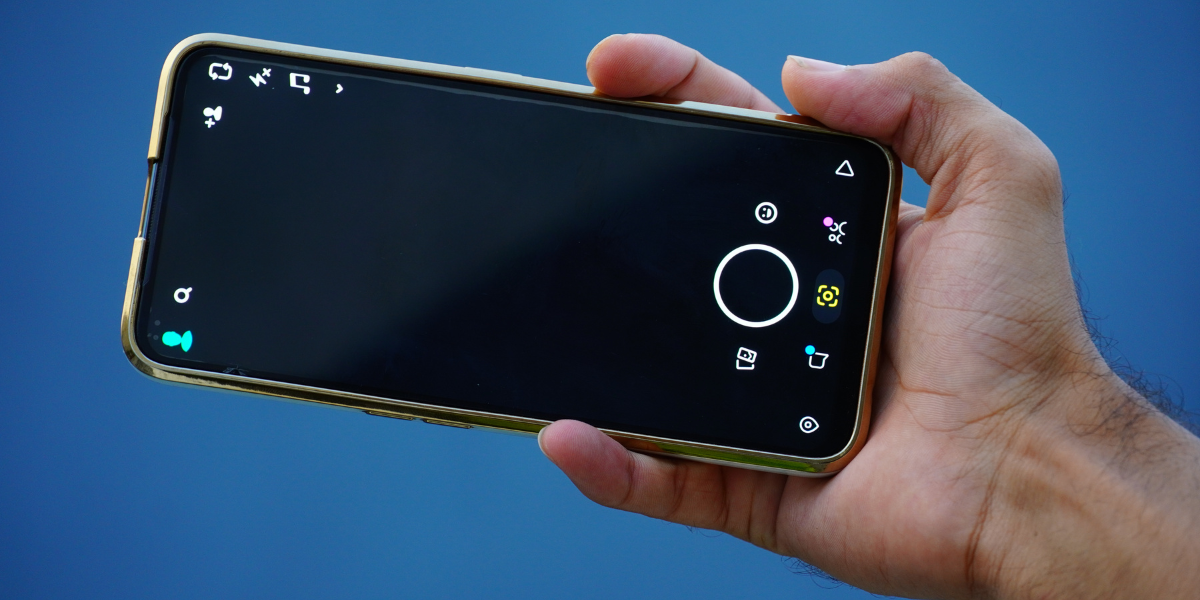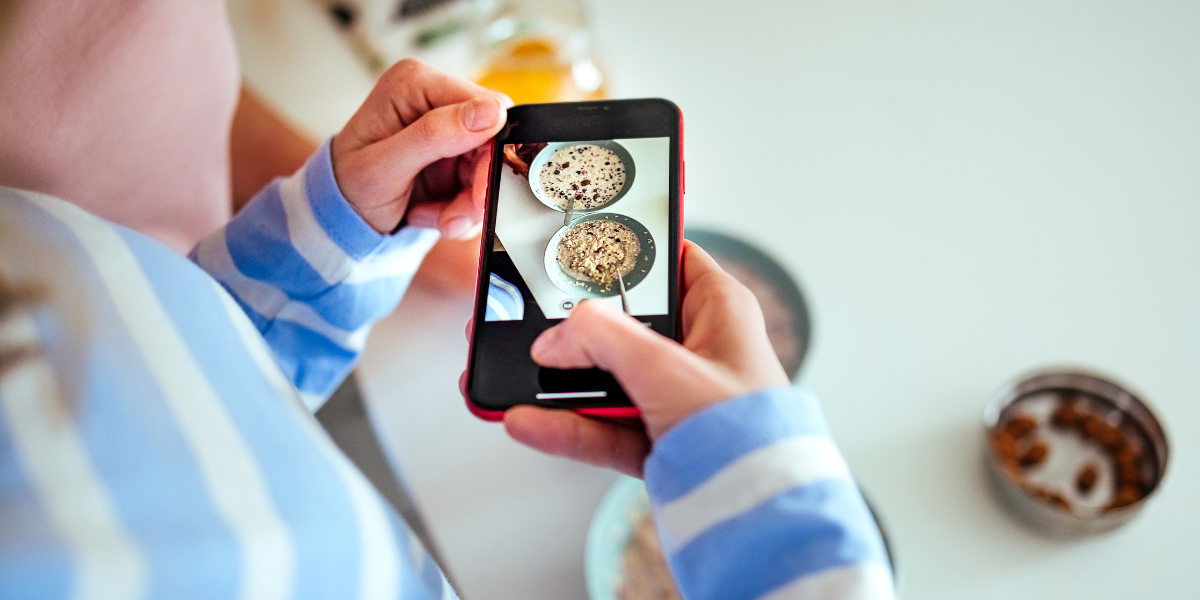Influencer marketing allows you to tap into the engaged audiences of key influencers in your industry that you may not otherwise reach. Choosing the right influencer for your brand is a tricky task; the average social media user is led to believe that influencers with more followers are better or more desirable for brands, but that’s not necessarily the case for every influencer or every marketing campaign.
The Different Types of Influencers
Social media influencers are not one-size-fits-all; there are different levels of influencers online. Many people hear “influencer” and think of big names with 1 million or more followers; these mega influencers are the type of influencer with the largest follower base (1m+). Sometimes, mega influencers overlap with celebrity culture and are viewed as celebrities by the media.
Below mega influencers, there are macro-influencers, with followers in the range of 500k to 1 million. Influencers with a follower base of 50k – 500k are classed as mid influencers. Below mid influencers, we have micro-influencers, boasting a following of 10k – 50k. Lastly, there are nano-influencers, with a following of 1k – 10k.
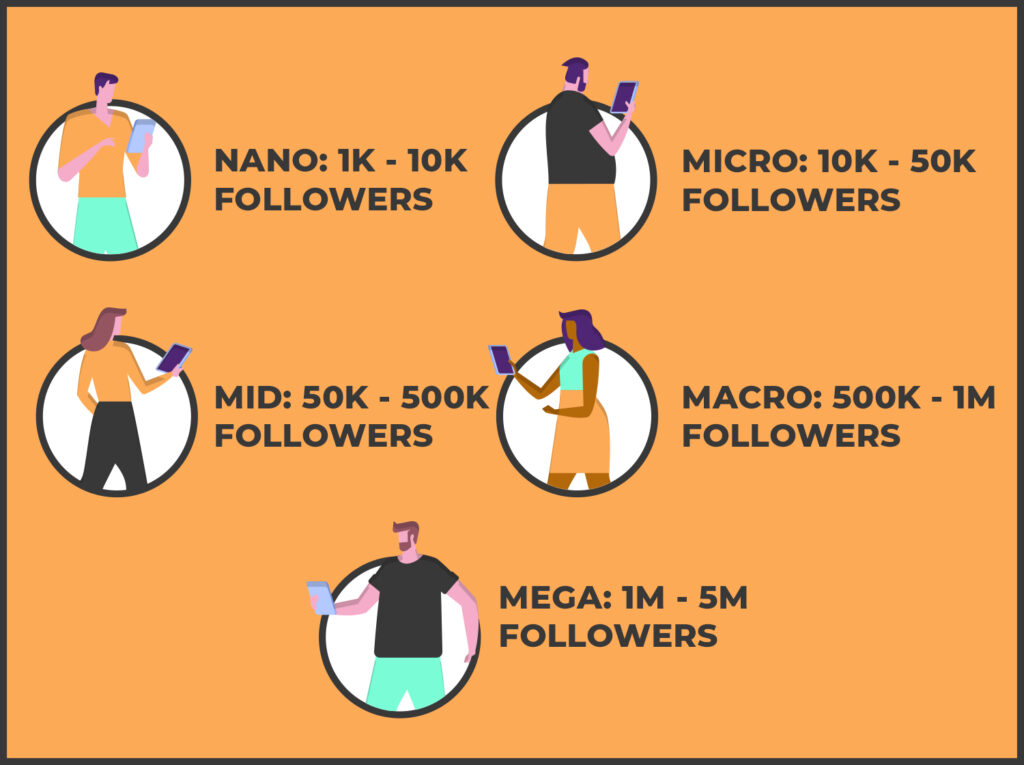
Finding Influencers
Choosing an influencer for your campaign requires in-depth research and strategy planning. As recommended in our guide to finding the best influencer for your brand, your influencer research should contain multiple parts:
- Search engine and editorial results – use strategic, long-tail keyword searches on Google (or another search engine) to find relevant influencers mentioned in articles, blogs, and on social media,
- Search through your follower list – you may have already attracted nano or micro-influencers to your page,
- Hashtag research – optimised hashtag discovery pages are a great resource to find influencers,
- Competitor research – this will help you find the kind of influencers your industry/interest-adjacent companies attract and how their audience could respond to your products/services,
- Lookalike and suggested profiles – if you’re interested in an account, you can use Instagram’s ‘suggested’ feature to find accounts Instagram thinks will also interest you.
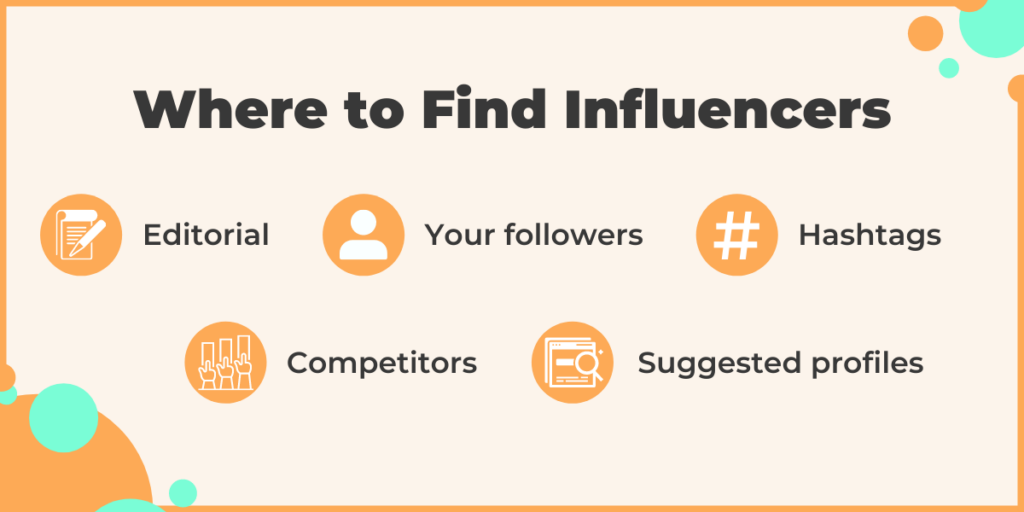
The Benefits of Tapping into Influencers’ Engaged Audiences
Spreading Brand Awareness to a Wider Market
Working with influencers will help you spread your brand awareness and reach a wider, engaged audience. Influencers have engaged audiences within established niches that you can then tap into with your marketing campaign. More people in the market for your products/services will become familiar with your brand and see your products, services, and content thanks to the influencer you’ve chosen to work with. This means your brand will be considered by more people in the awareness and consideration stages of the customer journey, increasing brand awareness and possibly leading to sales down the line.
Gaining New Purchases and Customers
Influencers are named as such because they have influence over their audience. Not only do “49% of consumers depend on influencer recommendations,” but 40% had also “purchased something after seeing it on Twitter, YouTube, or Instagram.”
One of the main benefits of influencer marketing is reaching potential customers within the influencer’s engaged, enthusiastic audiences, that you may not have otherwise reached. Influencers “have the ability to reach very specific audiences” and can “help you ensure a very targeted audience who is likely to be interested in your product.” From your extensive influencer research, you’ll know exactly the kind of audience you’ll reach with your influencer marketing campaign and how best to market to them.
Developing Brand Advocates & Loyalists
With the amount of influence that influencers have over their audience, influencer marketing campaigns hold a lot of weight in terms of trust and loyalty. Plenty of influencers emphasise to their audience that they will only work with brands they like and promote products they truly use. Influencers who follow this mindset and work with your business are likely to build up a relationship with you and possibly become brand advocates. In turn, the ongoing partnership and the influencer’s trust they’ve built with their audience could help create more brand loyalists for your business.
What to Watch Out For
Posting Styles
Always make sure you look through the previous content posted by the influencers you’re researching, especially previous sponsored/collaborative content. Simply looking at metrics is not enough, you need to ensure that the influencer’s messaging, style, and content aligns with your brand well. Is their sponsored post caption friendly or aggressive, cold or warm, professional or informal, somewhere in-between? How does their audience react in the comments (or with likes) to particular content types and styles – and how does this compare to what you want to create in your campaign? This is all vital to know as you will be tied to this influencer, and them to you, for the duration of your partnership.
False Engagement and/or Followers
Of course, engagement rate varies greatly between influencers based on numerous factors, such as follower size, industry, and the type of content they produce. Typically, influencers with large follower bases will receive lower engagement rates due to sheer volume, while smaller influencers have more niche and engaged audiences. Watch out for suspiciously high engagement rates from any level of influencer; this often indicates that the user has bought fake likes, meaning their engagement rate isn’t a true reflection of their real followers’ actions.
Influencer comparison platforms – such as Heepsy and Influencity – are powerful tools for influencer research. You’re able to see important metrics first-hand for influencers categorised by industry, location, followers, engagement rates, and more. Heepsy, for example, analyses influencers’ accounts and can use AI to determine a projected audience authenticity score, helping you weed out influencers with fake followers or likes.
Are you having trouble with influencer marketing for your business? Do you want to try it out but don’t have the time to learn a whole new avenue of marketing? Don’t worry, we understand, and we’re here to help! Get in touch with Giraffe Social Media to find out about our successful influencer marketing campaigns and how we can help you.



